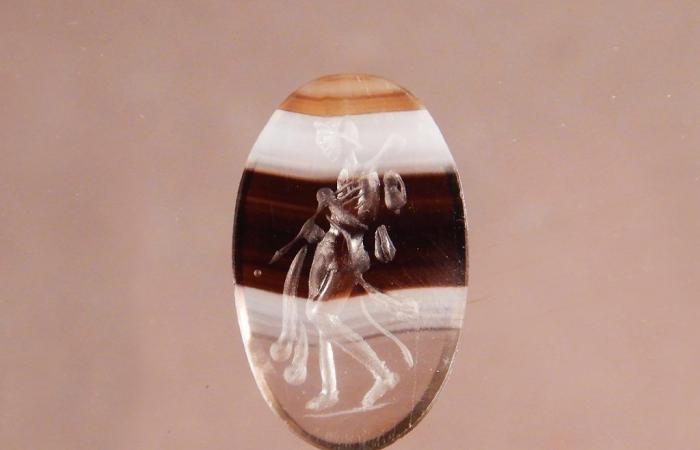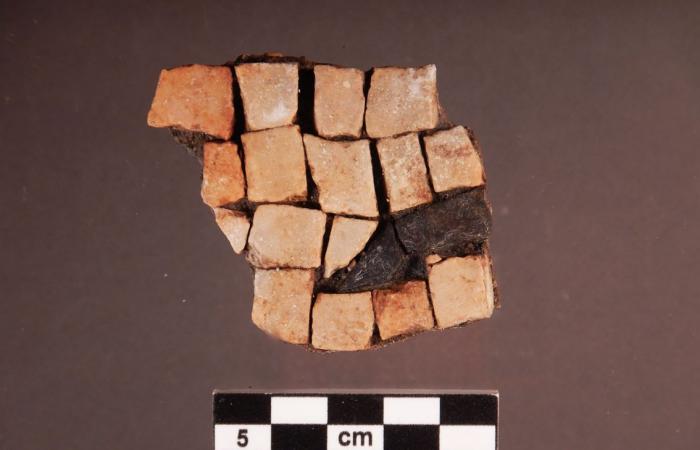The find is considered rare, in a lagoon environment it is one of the very few of this type ever found. A precious agate gem engraved with a mythological figure was found in Lio Piccolo: this is the result of the third excavation campaign. The submerged archaeological site dates back to the Roman age and is located in the Cavallino-Treporti area; the research is conducted by the Department of Humanities of the Ca’ Foscari University of Venice under the direction of Professor Carlo Beltrame, assisted by Dr. Elisa Costa, and with the technical support of the Idra company of Venice.
(TurismoItaliaNews) Such a find supports the hypothesis that it is a site frequented by wealthy Romans, perhaps precisely that villa that has been hypothesized by others. “In a lagoon environment it is a rather rare find, to date we have news of two other precious gems found in Torcello and at Barena del Vigno” explains Professor Charles Beltrame. Underwater investigations have allowed us to better understand the structure with a base of sesquipedal bricks and walls in oak wood planks from the 1st – 2nd century AD used for the conservation of oysters. The tank, which lies at -350 cm above mean sea level, still contains hundreds of molluscs inside and is equipped with a wooden sluice gate which was supposed to divide it into at least two rooms.
The excavation was carried out with the concession of the Superintendency of Archaeology, Fine Arts and Landscape for the Municipality of Venice and the Lagoon and with the collaboration of the Command of the Naval Station of the Financial Police of Venice. The campaign was financed by the Changes project “Cultural Heritage Active Innovation for Sustainable Society”, part of the Pnrr, in which Ca’ Foscari University is a partner of Spoke 1 “Historical Landscapes, Traditions and Cultural Identities” coordinated by the Aldo Moro University of Bari, and by the Municipality of Cavallino Treporti. The scientific collaboration with the biologist Davide Tagliapietra (Cnr-Ismar) and the geologist Paolo Mozzi (University of Padua) has made it possible to identify this structure as a basin for the conservation before consumption, rather than for farming, of oysters presumably buried by lagoon sediments due to a sudden event.
The only possible comparison with this singular structure is the imposing fishpond, equipped with a small room for storing oysters, excavated in the Roman site of Lac de Chapelles, port la Nautique, near Narbonne. “Alongside this system there is a brick paving laid on poles, many fragments of valuable frescoes and some fragments of black and white mosaic which, in the 1980s, prompted the discoverer of this site, the amateur archaeologist Ernesto Canal, to interpret it as a prestigious villa – adds Professor Beltrame – the basin and the floor plans offer a precious marker, because they are well dated, for the study of variations in the sea and local subsidence”. “Archaeology is continuing to give us answers by discovering our roots. The discovery of the precious agate gem is another piece that confirms the importance of continuing to finance research projects in order to outline an identity of the Cavallino-Treporti area and community in the past – underlines the councilor for culture Alberto Ballarin – the collaboration with Beltrame is also taking shape with the scientific dissemination of the underwater archaeological discoveries of the northern lagoon. We are very pleased that he accepted our invitation to participate in public meetings with citizens to share the experience and activity of the excavations”. The investigations were attended by doctoral students as well as students of maritime archeology who had the opportunity to gain experience in excavation and underwater documentation.





